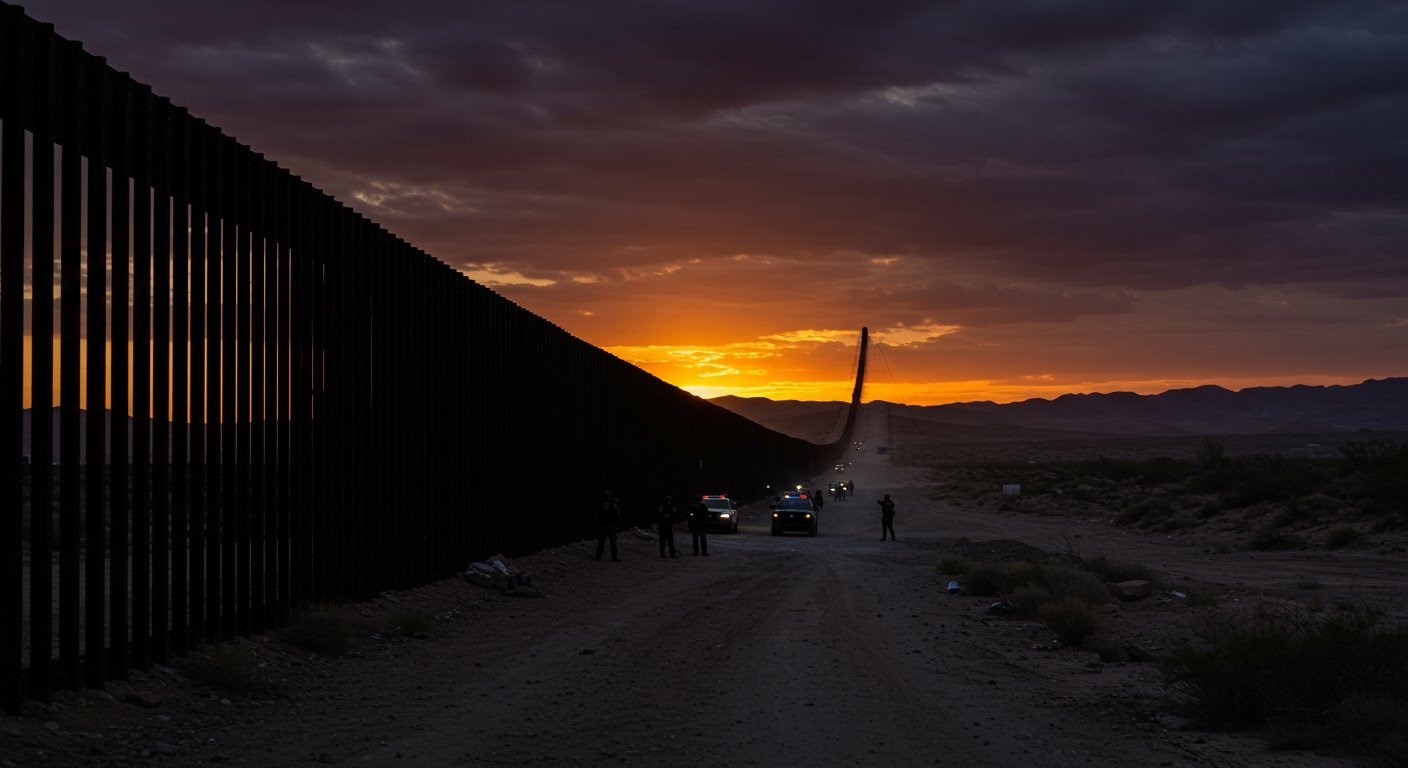A recent report from the Washington Office on Latin America (WOLA), published on June 20, 2025, highlights a complex and rapidly evolving situation along the U.S.-Mexico border, marked by increased enforcement, significant legislative action, and notable shifts in migration patterns.
Intensified Enforcement Operations Spark Concern
Immigration and Customs Enforcement (ICE) operations have reportedly intensified across the United States, particularly in major urban centers such as Los Angeles and other cities led by Democratic administrations. This surge in enforcement activities has triggered public protests and, in some instances, led to the controversial deployment of military personnel.
Sources indicate that President Trump is actively encouraging ICE to escalate operations nationwide. Data compiled by The Guardian and the Vera Institute of Justice reveals a striking 807% increase in arrests of migrants without prior criminal records between January and June. Separately, Reuters has reported a 91% rise in the arrests of individuals with minor prior criminal charges. These crackdowns have prompted concerns from various U.S. industries, including agriculture, hospitality, and food service, which are anticipating potential labor shortages as a result.
Proposed Spending Bill Advances with Massive Border Funding
Concurrently, a significant “reconciliation” spending bill is making its way through the Senate. This proposed legislation includes an estimated $170 billion designated for border hardening measures and extensive mass deportation plans. This figure is comparable to the $150 billion allocated in a related bill that narrowly passed the House of Representatives in May. The House version notably included tens of billions of dollars specifically earmarked for wall construction, detention facilities, and deportation efforts.
Despite the momentum, uncertainty remains regarding whether Congress will successfully pass the final bill by the July 4 deadline urged by the White House. This delay is reportedly due to ongoing intra-party disagreements that have complicated the legislative process.
May Migration Data Reveals Shifts Amidst Low Overall Numbers
New data from Customs and Border Protection (CBP) for May provides a detailed snapshot of migration trends, indicating that while overall migrant encounters remain near 60-year lows, there was a slight increase compared to the preceding months of March and April.
Border Patrol agents apprehended 8,725 migrants between ports of entry during May, averaging 281 apprehensions per day. This represents an increase from the 8,382 apprehensions recorded in April and the 7,182 in March. However, this number signifies a dramatic 93% decrease compared to the 117,905 apprehensions reported in May 2024, illustrating the stark contrast in migration flows year-over-year.
Notably, citizens from Mexico and the Northern Central American countries—Guatemala, Honduras, and El Salvador—accounted for 90% of all apprehensions between ports of entry in May. According to WOLA, this combined percentage is the highest recorded since November 2020.
CBP data further indicates a stringent policy regarding releases: no asylum seekers or other migrants apprehended by Border Patrol were released into the U.S. interior in May. All individuals were either detained, deported, or, in the case of unaccompanied minors, transferred into the custody of the Department of Health and Human Services.
Apprehensions of unaccompanied minors by Border Patrol saw an increase, rising by 28% from 789 in April to 1,008 in May.
Encounters at official ports of entry totaled 3,727 people in May, averaging 120 individuals per day. This figure is similar to the 3,648 encountered in April but marks a sharp decrease from the 52,811 encounters at ports of entry in May 2024.
Ninety-three percent of migrants encountered at ports of entry in May were Mexican citizens.
The El Paso sector has continued to be the leading sector for migrant apprehensions for the past four consecutive months, according to the data.
Overall, the total number of people taken into custody by CBP in May was 12,452. This is an increase from 12,030 in April and 11,017 in March, but remains considerably lower than the 170,716 individuals taken into custody in May 2024.
Demographic Shift Noted Amidst Policy Changes
The May data also highlights a significant shift in the demographics of encountered migrants, with a notable increase in single adults (85% in May) compared to family units (7%). This change is primarily attributed to the stated unavailability of asylum processes and the cessation of the CBP One app for asylum appointments by the Trump administration, policies which advocates argue push migrants towards more dangerous and irregular migration routes between ports of entry.
Legal Challenges and Military Deployment in Los Angeles
The situation in Los Angeles regarding the deployment of military personnel for domestic immigration operations has faced legal challenges. A federal judge issued a ruling on June 12 stating that the National Guard deployment was unlawful. However, this ruling was subsequently paused pending appeal by Judge Charles Breyer. The Ninth Circuit Court of Appeals later allowed the deployment to continue, with the appellate panel reportedly appearing receptive to President Trump’s claims of broad executive authority to federalize state Guard forces.
Reports suggest that planning for the deployment of military personnel in domestic immigration operations began as early as February, preceding the public announcements and legal challenges.
Taken together, the recent surge in enforcement, the pursuit of a massive border spending bill, and the shifting patterns revealed by the May data underscore a period of intense focus and policy changes impacting the U.S.-Mexico border region.






